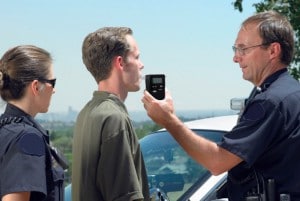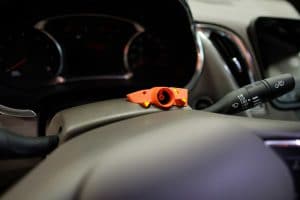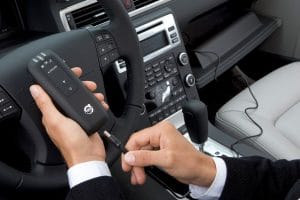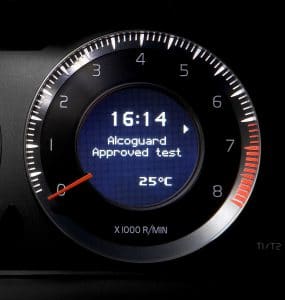
A new study from the IIHS shows that more than 9,000 lives could be saved annually by using technology to eliminate or reduce drunk driving.
There is a simple way to save more than 9,000 lives annually: use in-car technology to eliminate drunk driving.
That’s according to a new study from the Insurance Institute for Highway Safety, which adds that if alcohol-detection devices were installed in vehicles, preventing non-sober drivers from getting on the road, it would make a massive difference.
Statistics show that during the past decade, alcohol has been a factor in about 30% of all roadway deaths each year. The numbers would be higher, except for the fact that police arrest about 1 million people a year for alcohol-impaired driving.
(Moving Forward Act carves out funds, mandates for auto safety.)
“We haven’t made much progress in the fight against drunk driving since the mid-1990s,” said Charles Farmer, IIHS vice president of research and statistical services and the author of the paper. “This is something that could put a real dent in the alcohol-impaired driving problem.”
Despite the fact that vehicles are safer than ever, one area that hasn’t improved significantly is the consistent removal of impaired drivers from the roads. The technology is in place to prevent drunk drivers from hitting the highway, but it’s only used in limited situations.
Ignition interlock attached to a breath-testing unit are required in many jurisdictions for repeat drunk driving offenders. The systems, while on the surface seeming to be an extreme measure, do have public support, IIHS notes. In a 2009 survey of U.S. drivers, nearly two-thirds of the respondents said they would support the installation of similar systems in all vehicles, as long as they were fast, accurate and unobtrusive.
“Alcohol-impaired driving has been a scourge in the U.S. for decades, claiming 10,511 lives in 2018, accounting for over a quarter of all traffic deaths that year,” the National Safety Council, a non-profit safety advocacy group.
“NSC knows systems that are able to detect alcohol in drivers’ blood and prevent them from driving can help make roadways in the country safer for all road users. This study showing the thousands of lives saved from such systems strengthens the case for their implementation in all vehicles, and NSC urges requirements for this life-saving technology as soon as possible.”
(U.S. highway deaths declined in 2019.)
The study suggests that systems that would prevent people under the influence should be thought of the same way lane-keeping assist or emergency braking are — as advanced safety technologies. Several automakers have investigated how it could be done, although few seemingly as doggedly as Volvo did several years ago.
The automaker actually developed a system it called Alcoguard. It required the driver to blow into a device and it could measure the person’s blood-alcohol content, or BAC, and determine if they were legally allowed to drive. If not, it would deactivate the vehicle. It would even display the read out and “verdict” in the gauge cluster.
In the interim, a group called Driver Alcohol Detection System for Safety (DADSS) has been working to find a solution. DADSS is a is a public-private partnership linking the National Highway Traffic Safety Administration and the Automotive Coalition for Traffic Safety, which represents the world’s leading automakers. It’s currently road-testing a passive alcohol sensor that detects the driver’s blood-alcohol content by measuring the driver’s breath or touch.
“Once complete, the DADSS technology is likely to produce safety benefits on par with electronic stability control and the safety belt,” said Robert Strassburger, president and CEO, Automotive Coalition for Traffic Safety, in a statement.
“Because this program must ensure that the resulting DADSS system is accepted by consumers so that it may be widely deployed, the DADSS technology must meet strict performance standards for speed, accuracy, precision and reliability, the research being done now is critical to ensure that the technology is a success.”
The immediate goal doesn’t even have to be zero-tolerance, i.e. any trace of alcohol stopping the vehicle from working. IIHS officials suggest that even something that prevents a driver, who has been drinking, but is still below a 0.08 BAC – the legal limit for drunk driving in most states – would make a dramatic improvement.
(Self-driving cars will eliminate only a third of crashes, IIHS claims.)
Farmer determined that 37,636 crash deaths, or around a quarter of the total number of crash deaths during 2015-18, could have been prevented if the most impaired drivers’ BAC levels had been below 0.08 percent (the legal limit in most states). That works out to an average of 9,409 lives saved every year. However, if zero BAC is the mark, the numbers rise to nearly a third of the total deaths, about 12,000 a year, might have been averted.



